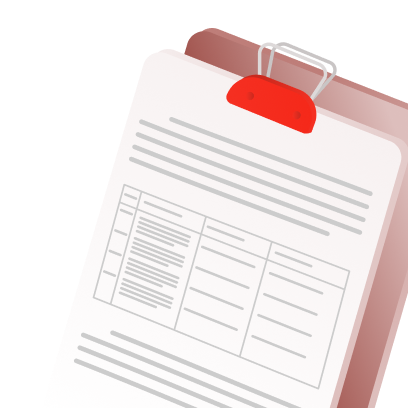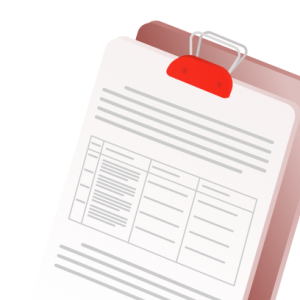Asian Infrastructure Investment Bank (AIIB): Goals, Structure, and India’s Role |
AIIB: Multilateral Development for Asian Prosperity
- The Asian Infrastructure Investment Bank (AIIB) is a multilateral development bank with a mission to improve social and economic outcomes in Asia.
- It is established by the AIIB Articles of Agreement(entered into force 25, 2015) which is a multilateral treaty. The Parties (57 founding members) to agreement comprise the Membership of the Bank.
- It is headquartered in Beijing and began its operations in January 2016.
- The members of the Bank have now grown to 97 approved members worldwide.There are 27 prospective members including Armenia, Lebanon, Brazil, South Africa, Greece, etc.
- Fourteen of the G-20 nations are Asian Infrastructure Investment Bank members including France, Germany, Italy and the United Kingdom.
- By investing in sustainable infrastructure and other productive sectors in Asia and beyond, it will better connect people, services and markets that over time will impact the lives of billions and build a better future.
AIIB Goals
- To foster sustainable economic development, create wealth and improve infrastructure connectivity in Asia by investing in infrastructure and other productive sectors.
- To promote regional cooperation and partnership in addressing development challenges by working in close collaboration with other multilateral and bilateral development
- To promote investment in the public and private capital for development purposes, in particular for development of infrastructure and other productive sectors.
- To utilize the resources at its disposal for financing such development in the region, including those projects and programs which will contribute most effectively to the harmonious economic growth of the region;
- To encourage private investment in projects, enterprises and activities contributing to economic development in the region when private capital is not available on reasonable terms and conditions.
Various Organs of AIIB
Board of Governors
- The Board of Governors consists of one Governor and one Alternate Governor appointed by each member country.
- The Board of Governors may delegate to the Board of Directors any or all its powers, except the power to:
- admit new members and determine the conditions of their admission;
- increase or decrease the authorized capital stock of the Bank;
- elect the Directors of the Bank and determine the expenses to be paid for Directors and Alternate Directors and remuneration;
- elect the President, suspend or remove him from office, and determine his remuneration and other conditions of service;
- approve, after reviewing the auditors’ report, the general balance sheet and the statement of profit and loss of the Bank;
- amend the ‘AIIB Articles of Agreement’
Board of Directors
- The Board of Directors are composed of twelve members who shall not be members of the Board of Governors, and of whom:
- nine are elected by the Governors representing regional members; and
- They are elected by the Governors representing non-regional members.
Senior Management
- Asian Infrastructure Investment Bank staff is headed by the President who is elected by AIIB shareholders for a five-year term and eligible for re-election once.
- The President is supported by Senior Management which includes five Vice Presidents responsible for:
- policy and strategy
- investment operations, finance
- administration and the corporate secretariat and the General Counsel
- Chief Risk Officer and Chief Programmer Officer
International Advisory Panel
- The Bank has established an International Advisory Panel (IAP) to support the President and Senior Management on the Bank’s strategies and policies as well as on general operational issues.
- The Panel meets in tandem with the Bank’s Annual Meeting, or as requested by the President.
- The President selects and appoints members of the IAP to two-year terms.
- Panelists receive a small honorarium and do not receive a salary. The Bank pays the costs associated with Panel meetings.
AIIB Annual Meeting
- The first Asian Infrastructure Investment Bank Board of Governors Meeting was held in Beijing, China in 2016.
- The second was held in Jeju, Korea in 2017 and the third was held in Mumbai, India in 2018.
- On July 12-13, 2019 Luxembourg Will host AIIB’s first Annual Meeting to be held outside Asia.
- The theme of the 2019 Annual Meeting “Cooperation and Connectivity” in recognition of the economic and social benefits to be realized through better connectivity within and between countries and regions, including Europe and Asia.
Membership in the AIIB
- Membership in the AIIB is open to all members of the World Bank or the Asian Development Bank and is divided into regional and non-regional
- Regional members are those located within areas classified as Asia and Oceania by the United Nations.
- Unlike other MDBs (multilateral development banks), the Asian Infrastructure Investment Bank allows for non-sovereign entities to apply for AIIB membership, assuming their home country is a member.
Financial Resources of AIIB
- Paid-Up Share Capital: It is the amount of money that has already been paid by investors in exchange for shares of stock.
- Called-Up Share Capital: Some companies may issue shares to investors with the understanding they will be paid at a later date.
- This allows for more flexible investment terms and may entice investors to contribute more share capital than if they had to provide funds up front.
- China Is the largest contributor to the Bank, contributing USD 50 billion, half of the initial subscribed capital.
- India Is the second-largest shareholder, contributing USD 8.4 billion.
Voting Rights in in AIIB
- China is the largest shareholder with 26.61% voting shares in the bank followed by India (7.6%), Russia (6.01%) and Germany (4.2 %).
- The regional members hold 75% of the total voting power in the Bank.
AIIB Financing Framework
- The recipients of Asian Infrastructure Investment Bank financing may include member countries (or agencies and entities or enterprises in member territories), as well as international or regional agencies concerned with the economic development of the Asia-Pacific region.
- The AIIB has signed a co-financing framework agreement with the World Bank and three non binding Memorandum of Understanding (MOU) with:
- Asian Development Bank (ADB),
- European Bank for Reconstruction and Development (EBRD),
- European Investment Bank (EIB).
- The bulk of AIIB’s operations are in South Asia.
- The Bank can lend outside Asia provided that it supports connectivity with Asia or it is for a global public good and that the loan significantly benefits Asia.
China and AIIB
- The creation of the AIIB is part of a broader reorientation of Chinese foreign and international economic policy that has taken place since Xi Jinping became Chinese Communist Party General Secretary in 2012 and the President in 2013.
- To realize the vision of “One Belt, One Road” (OBOR) Initiative, China is investing in a range of institutions and initiatives,including the AIIB, and other funding mechanisms such as the Silk Road Fund (established in 2014) and the New Development Bank (also known as the BRICS Bank established in 2014), a collective arrangement with Brazil, Russia, India, and South Africa.
- China also seeks to influence the emerging structure of regional trade and investment
India and AIIB
- India was among the AIIB’s 57 founding members in 2016.
- It is also its second-largest shareholder (with 62% voting shares) after China (26.06%).
- It has received USD 4.35 billion from the Bank.
- AIIB has approved financing projects in India in a host of sectors like energy, transport and water including the Bangalore metro rail project (USD 335 million), Gujarat rural roads project (USD 329 million) and Phase 3 of the Mumbai urban transport project (USD 500 million).
- AIIB third Annual Meeting was held in Mumbai, India on June 25 and 26, 2018. The theme was “Mobilizing Finance for Infrastructure: Innovation and Collaboration,” in recognition of the private sector’s vital role in bridging the infrastructure gap.
- In a recent virtual meeting, India said that it expects AIIB to introduce new financing instruments, provide financing for social infrastructure and to integrate development of climate resilient and sustainable energy access infrastructure into AIIB’s recovery response to the Covid-19 crisis.
- In June 2020, AIIB approved USD 500 million for Covid-19 Emergency Response Fund and Health Systems Preparedness Project and another USD 750 million for Covid-19 Active Response and Expenditure Support, in a co-financing arrangement with the Asian Development Bank (ADB).
AIIB and India: Navigating China’s Influence
- China Factor is a bone of contention for India
- There are various issues between India and China:
- Indian membership in the Nuclear Suppliers Group (China maintains that it will not support India’s entry until there is a universal formula to accept applications from all countries that haven’t signed the Non-Proliferation Treaty– indirectly pursuing case for Pakistan),
- territorial disputes in the Himalayas,
- concerns over the China-Pakistan Economic Corridor’s traversal of disputed territory in Kashmir.
- India has serious concerns over Chinese foreign policy in its region generally and the OBOR initiative specifically, regarding Beijing’s attempts to seek influence in its immediate neighborhood with great interest.
AIIB: Way Forward
- It is well proved throughout the history of economic growth & development that the creation and development of robust financial institutions will make market forces more competitive leading towards comprehensive growth and development of society.
- India should continue to engage with AIIB as it will be able to access resources for the financing of national and cross-border infrastructure projects from the Bank.
- AIIB is also significant as the World Bank is continues to be dominated by the USA while Japan has more influence over the Asian Development Bank (ADB).
- Further, India needs to ensure that its own interests are served by its membership very explicitly. It should make sure that AIIB doesn’t end up becoming a tool of the Chinese geopolitical agenda.































